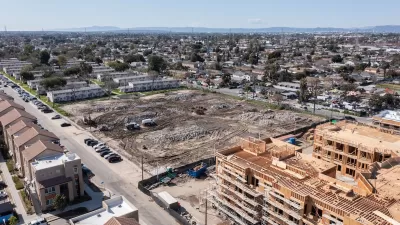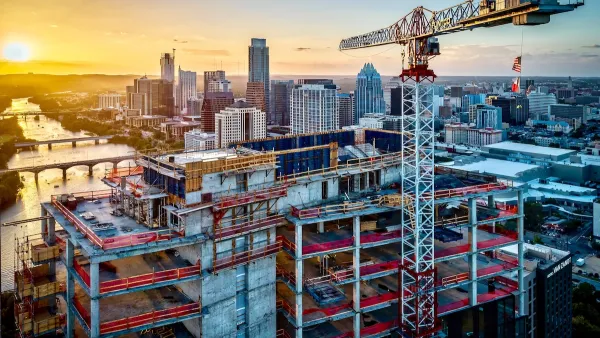AB 2243 paves the way for easier conversion of industrially and commercially zones properties for residential development.

In an analysis for The National Law Review, Brooke Miller outlines the potential impacts of California Assembly Bill 2243, which was signed into law by Governor Gavin Newsom last month.
The law expands the type of sites eligible for expedited approvals, adding regional mall properties of up to 100 acres that could help make larger multifamily developments with affordability requirements more financially feasible. The law also allows development within 500 feet of a freeway (previously prohibited), provided that the development takes steps to improve air quality.
According to Miller, “AB 2243 also provides some relief from the strict minimum density requirements of AB 2011, instead designating the “allowable” density- but still requires projects to meet at least 50% of the allowable density (75% for sites within ½ mile of an existing rail or bus rapid transit station) through 2026; after January 1, 2027, 75% is the minimum.”
AB 2243 also addresses a provision that usually requires developers to add common open space to new residential development, recognizing that the physical limitations of a site can make meeting that requirement challenging. “For both conversion and redevelopment projects, AB 2243 also limits mitigation fees to the incremental impact of the development, in recognition that the existing use likely already contributed to mitigating some development impacts.”
AB 2243 adds more qualifying “surrounding urban uses” to free up more sites for housing development. “AB 2243 also takes aim at AB 2011’s exclusion for sites in a “neighborhood plan”, which can work against a project in an outdated community plan area or a jurisdiction with few areas outside such planning boundaries.”
FULL STORY: State of Conversion: Update on Adaptive Reuse and Conversion Legislation

Planetizen Federal Action Tracker
A weekly monitor of how Trump’s orders and actions are impacting planners and planning in America.

Restaurant Patios Were a Pandemic Win — Why Were They so Hard to Keep?
Social distancing requirements and changes in travel patterns prompted cities to pilot new uses for street and sidewalk space. Then it got complicated.

Map: Where Senate Republicans Want to Sell Your Public Lands
For public land advocates, the Senate Republicans’ proposal to sell millions of acres of public land in the West is “the biggest fight of their careers.”

Maui's Vacation Rental Debate Turns Ugly
Verbal attacks, misinformation campaigns and fistfights plague a high-stakes debate to convert thousands of vacation rentals into long-term housing.

San Francisco Suspends Traffic Calming Amidst Record Deaths
Citing “a challenging fiscal landscape,” the city will cease the program on the heels of 42 traffic deaths, including 24 pedestrians.

California Homeless Arrests, Citations Spike After Ruling
An investigation reveals that anti-homeless actions increased up to 500% after Grants Pass v. Johnson — even in cities claiming no policy change.
Urban Design for Planners 1: Software Tools
This six-course series explores essential urban design concepts using open source software and equips planners with the tools they need to participate fully in the urban design process.
Planning for Universal Design
Learn the tools for implementing Universal Design in planning regulations.
Heyer Gruel & Associates PA
JM Goldson LLC
Custer County Colorado
City of Camden Redevelopment Agency
City of Astoria
Transportation Research & Education Center (TREC) at Portland State University
Camden Redevelopment Agency
City of Claremont
Municipality of Princeton (NJ)





























